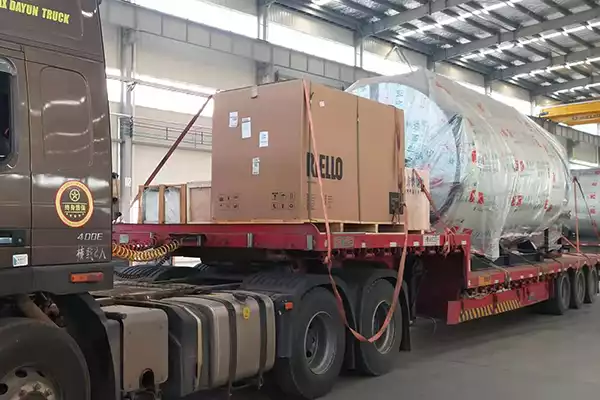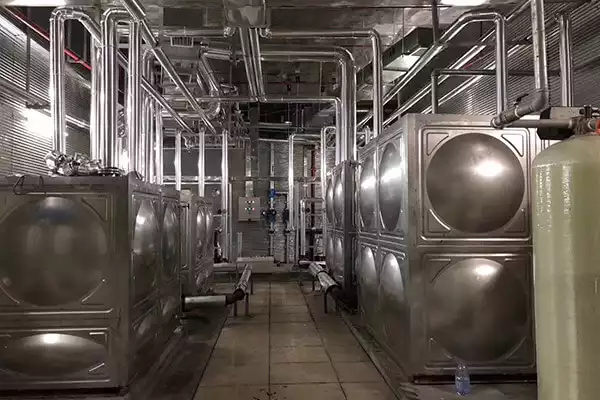The price of a thermal oil boiler is about $3,500 – $120,000. In this guide, we will explore the function of thermal oil, the working principles of a thermal oil boiler, the differences between thermal oil and steam boilers, and how to calculate the efficiency of a thermal oil boiler. So, let’s dive in and discover the world of thermal oil boilers together.
What is the function of thermal oil?
The function of thermal oil is to act as a heat transfer medium in various industrial processes. Its primary function is to carry heat from a heat source to various components or applications within a system. Its typically used in closed-loop systems, where it circulates through a network of pipes or coils, absorbing heat at one end and delivering it to another.
Here are some key functions of thermal oil:
- Heat Transfer: Thermal oil is used to transfer heat from a heat source to a heat sink. It absorbs heat energy at elevated temperatures and carries it to another location or process where the heat is needed.
- Temperature Control: Thermal oil allows precise temperature control in industrial processes. By regulating the flow rate and temperature of the thermal oil, the desired temperatures can be achieved and maintained.
- Lubrication: In certain applications, thermal oil can also serve as a lubricant, reducing friction and wear between moving parts. This is particularly useful in systems that operate at high temperatures where conventional lubricants may break down.
- Isolation: Thermal oil acts as an isolating medium, preventing direct contact between the heat source and the working fluid or material being heated. This can help protect sensitive materials or equipment from direct exposure to high temperatures.
- Stability and Safety: Thermal oil is designed to have high thermal stability and resist degradation at elevated temperatures. It typically has a high flash point, reducing the risk of fire or explosion compared to other heat transfer fluids.
- Compatibility: Thermal oil can be tailored to suit specific applications and is compatible with a wide range of materials commonly used in industrial processes, such as metals, polymers, and food-grade materials.
Working principle.
A thermal oil boiler operates using thermal oil as the heat transfer medium. Here’s a general overview of how a thermal oil boiler works:
- Heat Generation: A thermal oil boiler typically has a burner that uses a fuel source such as natural gas, diesel, or biomass to generate heat. The burner ignites the fuel, creating a flame inside a combustion chamber.
- Heat Transfer: The generated heat is transferred to the thermal oil. The combustion gases from the burner flow through a heat exchanger, which consists of tubes immersed in a large volume of thermal oil. As the hot gases pass through the tubes, they transfer their heat energy to the thermal oil surrounding them.
- Circulation: The thermal oil absorbs the heat and becomes hot. It is then circulated using a pump or natural convection through a closed-loop system. The thermal oil flows from the boiler through a network of pipes or coils to the heat consumers, such as industrial processes, heat exchangers, or storage tanks.
- Heat Utilization: At the heat consumers, the thermal oil releases its heat energy, transferring it to the process or equipment that needs to be heated. Thermal oil can provide high temperatures without the risk of corrosion or scale formation, making it suitable for various applications.
- Return and Reheating: After releasing its heat, the cooled thermal oil returns to the thermal oil boiler to be reheated. It re-enters the boiler and passes through the heat exchanger again, where it absorbs heat from the burner flames, restarting the cycle.
- Temperature Control and Safety: The thermal oil boiler system includes temperature control mechanisms, such as temperature sensors and controllers. These devices monitor and regulate the temperature of the thermal oil to ensure it remains within the desired range. Safety measures, such as pressure relief valves and temperature limit switches, are also incorporated to protect the system from excessive pressure or temperature.
Temperature.
The temperature of a thermal oil boiler can vary depending on the specific requirements of the application. Generally, thermal oil boilers can operate at temperatures ranging from 300 to 400 degrees Celsius (572 to 752 degrees Fahrenheit). However, some specialized systems may reach even higher temperatures for specific industrial processes.
Efficiency.
Thermal oil heaters are known for their high efficiency in transferring heat. They can achieve efficiency levels of up to 90% or more. The efficiency of a thermal oil heater depends on various factors, such as the design of the system, insulation, burner technology, and maintenance practices. Regular maintenance and proper insulation can help maximize the efficiency and performance of a thermal oil heater.
Efficiency calculation.
To calculate the efficiency of a thermal oil boiler, you need to compare the amount of heat energy transferred to the thermal oil with the energy input to the boiler. Here’s a general formula for calculating the thermal efficiency:
Thermal Efficiency = (Heat Output / Fuel Input) x 100
- Heat Output: This refers to the heat energy transferred to the thermal oil. It can be calculated by multiplying the mass flow rate of the thermal oil (in kg/s) by the specific heat capacity of the thermal oil (in J/kg·°C) by the temperature difference across the heat exchanger (in °C). Heat Output = Mass Flow Rate × Specific Heat Capacity × Temperature Difference
- Fuel Input: This represents the energy input to the boiler in the form of fuel. It can be determined by measuring the fuel consumption rate (in kg/s or liters/s) and the calorific value of the fuel (in J/kg or J/liter). Fuel Input = Fuel Consumption Rate × Calorific Value
- Convert Units: Ensure that all units are consistent throughout the calculation. For example, if the mass flow rate is given in kg/h, it needs to be converted to kg/s.Once you have the values for Heat Output and Fuel Input, plug them into the thermal efficiency formula to calculate the efficiency.
For example: Assuming a thermal oil boiler has a Heat Output of 500,000 J/s and a Fuel Input of 600,000 J/s, the thermal efficiency would be: Thermal Efficiency = (500,000 / 600,000) x 100 = 83.33%
Thermal oil boiler vs steam boiler.
The main difference between a steam boiler and a thermal oil boiler lies in the medium used for heat transfer and the operating principles. Here’s a breakdown of the key differences:
- Heat Transfer Medium: In a steam boiler, water is used as the heat transfer medium. It is heated in the boiler to produce steam, which carries the heat energy to the desired location. In contrast, a thermal oil boiler uses thermal oil (also known as thermal fluid) as the heat transfer medium. The thermal oil is heated in the boiler and circulated through a closed-loop system to transfer heat to the process or equipment.
- Operating Pressure: Steam boilers operate at high pressures to generate and maintain the steam necessary for heat transfer. The steam pressure is typically measured in pounds per square inch (psi) or bars. Thermal oil boilers, on the other hand, operate at atmospheric pressure or slightly higher. The pressure in a thermal oil system is typically much lower compared to a steam system.
- Temperature Range: Steam boilers can achieve high temperatures, typically up to 350°C (662°F) or even higher, depending on the pressure. Thermal oil boilers, however, can reach even higher temperatures, typically ranging from 250°C (482°F) to 400°C (752°F) and beyond. This makes thermal oil boilers suitable for processes that require very high temperatures.
- Efficiency: Steam boilers require water to be converted into steam, which involves heat losses due to evaporation and condensation. This can affect the overall efficiency of steam systems. Thermal oil boilers, on the other hand, operate as closed-loop systems, with no phase change of the heat transfer fluid. This leads to higher thermal efficiency, as there are no energy losses associated with evaporation or condensation.
- System Design: Steam systems require additional components, such as steam traps, condensate return systems, and pressure vessels, to handle the steam generation, condensation, and recycling of the water. Thermal oil systems, being closed-loop systems, have a simpler design and require fewer components. They often include circulation pumps, expansion tanks, and heat exchangers.
What is the cost of a thermal oil boiler?
The cost of a thermal oil boiler can vary depending on factors such as its size, capacity, design, and additional features or customization required for specific applications.
| Boiler Size (kW) | Efficiency (%) | Cost Range ($) |
|---|---|---|
| 1,000 | 85 | 3,500 – 5,000 |
| 2,500 | 88 | 5,500 – 8,000 |
| 5,000 | 90 | 8,500 – 1,000 |
| 10,000 | 92 | 15,000 – 35,000 |
| 20,000 | 94 | 40,000 – 65,000 |
| 50,000 | 96 | 80,000 – 120,000 |
Conclusion.
In conclusion, whether you need a thermal oil boiler for chemical processing, asphalt production, or any other industrial process. Fangkuai Boiler is here to provide you with the highest level of performance, efficiency, and customer satisfaction. Trust in our expertise and let us assist you in finding the ideal thermal oil boiler for your needs. If you want to learn about the detailed parameters and prices of thermal oil boilers, please contact us at +0086 186-2391-5479.
Get your best price
Quickly compare 3 FREE quotes
- Engineer quick quote
- The overall delivery speed is fast
- Financial choice
- Low installation costs and cost savings
25 years+ of boiler R&D
More than 20 innovative technologies











